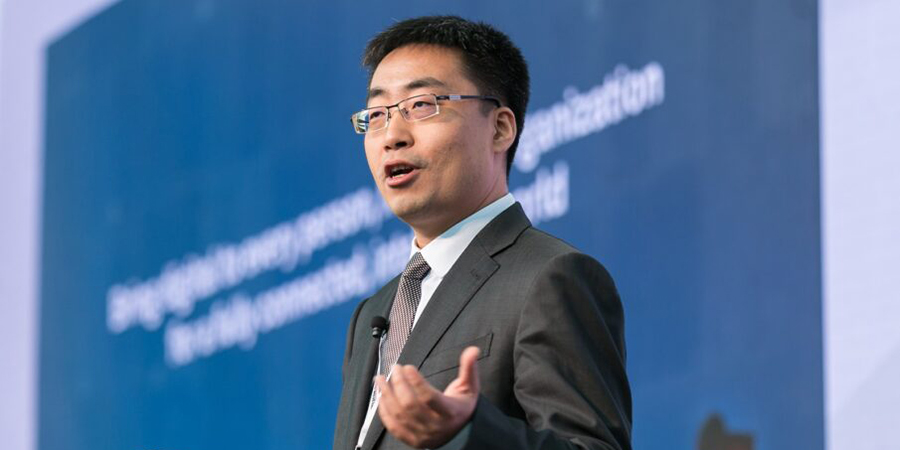In an exclusive interview with Telecom Review, An Jian, president, Carrier Network Business Group, Huawei Middle East and Central Asia, shared his insights on the evolution towards 5.5G and beyond.
As one of the leading ICT technology vendors, Huawei has been a pioneer in introducing new technology and solutions. So, what are the new solutions Huawei is showing at MWC 2023?
Huawei's theme of "GUIDE to the Intelligent World" at the MWC 2023 exhibition reflects our commitment to providing innovative technologies, products and solutions to help our customers achieve business success and accelerate progress towards an intelligent world of the future. Through showcasing our cutting-edge products and technologies, Huawei aims to demonstrate our leadership in areas such as 5G prosperity, 5.5G era, AI-driven intelligent digital transformation, cloud for telco cloudification and green development. By highlighting the potential of these technologies, Huawei hopes to inspire businesses to embrace digital transformation and leverage the power of technology to drive growth, innovation and sustainability. Overall, Huawei's participation at the exhibition reiterates its commitment to guiding customers towards a more intelligent future and highlights its role as a leading provider of innovative solutions in the ICT industry.
It has been over three years since the first commercial launch of a 5G network in the region, and since then, many operators have launched 5G services. What are your views of overall 5G development in the region?
Middle East operators are among the early adopters of 5G technology and have launched 17 commercial networks so far. This is a significant development for the region, as 5G has the potential to transform industries and enable new use cases, such as autonomous vehicles, smart cities and virtual reality.
The fact that 5G coverage reaches 35 million people and has a user penetration of around 30% shows that there is a significant demand for this technology in the region. Moreover, the total number of 5G users in the Middle East and Central Asia region exceeds 16 million, including over 2.2 million fixed wireless access (FWA) users for the home market and over 50,000 leased line users. This indicates that people are using 5G for both personal and professional purposes.
It's encouraging to know that some operators who launched 5G earlier with innovative services saw a measurable return on investment, including a double-digit revenue increase YoY and a 10% increase in ARPU in the first year of launching the 5G service. This shows that 5G is not just a technological advancement but also a business opportunity for operators who can leverage it to provide new and innovative services to their customers.
Overall, the adoption of 5G in the Middle East and Central Asia region is a positive development that can bring significant benefits to both consumers and businesses. It will be interesting to see how this technology evolves and shapes the future of the region.
You mentioned the 5.5G era. What could be the driving force for the next technology evolution?
While 5G has been instrumental in enabling new service scenarios, applications and business models and has paved the way for unprecedented growth opportunities, there are growing demands to cater to new consumer and industry digital transformation needs. The evolution towards 5.5G or beyond is likely to bring more advanced capabilities, higher speeds and greater connectivity to support the growing number of connected devices and emerging applications.
For mobile broadband communication, it promises to bring about unprecedented growth opportunities and enable new service scenarios, applications and business models. One of the significant advantages of 5.5G is its ability to upgrade network capabilities by 10X and support a 10 Gbps experience, enabling 100 billion connections and native intelligence for numerous services.
Furthermore, several operators and regulators have partnered with Huawei to promote the concept of “10 Giga society” or “10 Giga nation.” We have proposed the 5.5G era concept to guide our partners towards achieving this 10 Giga objective. This concept involves leveraging technology across multiple domains to provide a 10 Gbps experience everywhere. The wireless access domain achieves this through a wider spectrum, higher spectral efficiency and higher-order MIMO, while the optical fiber domain uses technologies such as FTTR, 50G PON and 800G. The data communication network domain employs Net5.5G innovation to support ubiquitous 10 Gbps with new 800 GE interfaces, hierarchical slicing technology and intelligent scheduling algorithms.
The move towards the 5.5G era will be a collaborative effort of industry players to create a better, intelligent world together. It promises to unlock new opportunities for growth and innovation across various industries.
One of the key technologies in the 5.5G era is wireless 5.5G. Are there any special requirements for the spectrum?
For wireless 5.5G development, it is essential to have the right spectrum strategy. The U6 GHz spectrum is seen as a valuable asset for 5.5G and the ITU WRC-23, taking place in October this year, will play a key role in determining its use for wireless communication. Operators should work with regulators and industry organizations to ensure that U6 GHz is designated as a wireless communication spectrum, which will enable its use for 5.5G and other future wireless technologies. This will require broad support from stakeholders and may involve negotiating with other parties that may also be interested in using the spectrum.
In addition to U6 GHz, mmWave is another spectrum that is being considered for 5.5G. This high-frequency band has the potential to provide ultra-high data rates but also requires significant infrastructure investments due to its limited coverage range. Operators should evaluate the potential benefits and challenges of using mmWave for 5.5G and plan their network strategies accordingly.
Overall, participation in industry organizations and standard discussions, as well as proactive involvement in spectrum preparation, can help operators maximize the benefits of 5.5G and ensure a smooth evolution to this new wireless technology.










